A short holiday in Zanzibar and African Child Day
Tuesday, 17 June 2014
A short holiday in Zanzibar
So far I’ve only been in Dar es Salaam and its suburb Kigamboni. Last time I was in Tanzania I’d been to three National Parks, including the very impressive Ngorongoro crater, but near Dar es Salaam there’s nothing comparable, so it was okay not to do another safari. However I’d heard such good things about Zanzibar that I didn’t want to give that a miss.
Although Nas has been to many countries in Europe and Asia as an acrobat, he’d never been to Zanzibar although it is barely three hours by boat from Dar. So we arranged to go together for a few days at the end of my time here.
I had assumed that Zanzibar would be richer than on the mainland, partly from what I’d heard from others and partly as I’d heard that there’s a strong movement on the island to get independence from mainland Tanzania, as they feel they don’t profit enough from the income derived from tourism on the island. (Although if anybody gets the profit I guess it’ll be firms from abroad which run the hotels and bigger resorts).
But what I saw wasn’t like that. We didn’t stay in the touristy part but with William, a friend of Nas’, who lives about thirty minutes bus ride away from the centre (Stone Town) in an area even poorer than Kigamboni. (Hardly the usual destination for tourists: I didn’t see any other white-skinned people anywhere near the place in all the time we were there).
Zanzibar is noticeably more Arab and Muslim than the mainland with more women wearing veils or niqabs. Despite what the guide told me I felt a more uneasy atmosphere here. On the way to William’s home we passed a Hindu temple where the high perimeter walls with barbed wire had recently been reinforced with razor wire. I had images of police stations in Northern Ireland during the Troubles which–if my memories serve me well – also had razor wire for protection. And on our last day we heard that a bomb had been placed near a mosque killing one person and injuring three others. We were going to leave a few hours later anyway, but I was happy to leave after getting that news.
On a brighter note Stone Town was quaint, much in need of renovation unfortunately. I particularly liked the evening food buffet (for want of a better name) where we could wander from stall to stall admiring the food- mostly seafood – choosing what one wants and then having it freshly fried. All in a lovely evening ambience. The next day we took a boat ride to the nearby Prison Island which was only shortly a prison for its Arab owners who then sold it to the British who used it as a quarantine station after bubonic plague and yellow fever broke out in Egypt. Now it has a government owned hotel and a thriving group of giant tortoises, the oldest being 157 years young! I dived to the coral reef but as the waves were quite rough visibility was poor. To do the job properly I’d have needed more time and the proper equipment. Perhaps next time?
Another highlight of the trip – if you can call it that – was seeing the old slave market and the miserable conditions in which the slaves were kept before being sold. 50 in the small 3metre by 3 metre ‘room’ pictured here, the trench in the middle being used as a toilet. They had to sleep on top of each other. Over half of each batch used to die; the idea being to sort out the chaff from the wheat, as only the ones thought to be tough were considered good enough to be sold …….
My other memory will be of seeing the opening of the World Cup squatting on the floor with 30 other men and young lads watching a small screen with a picture of very bad quality and listening to a commentary which was fairly unintelligible and, I think, in French. The reception kept on being interrupted but this didn’t stop the banter of the locals, most of whom didn’t seem to be so interested in the finesse of the game, but more in teasing the fans of the opposing team when their players missed a chance. Wonderful.
- Typical Stone Town Door, in Indian Style
- Arriving at Prison Island
Wednesday, 18 June 2014
KCC plays the red piper on a day of the African Child
On Sunday I was able to experience a modern-day ‘Pied Piper of Hamlin’ happening hosted by KCC. Every year as their contribution to the Day of the African Child, KCC organises a procession starting from the centre which wends its way to a site for one of their performances. Led by 2 performers on stilts and accompanied by cacophony of percussion and singing mostly by Hassan, the shelter worker, children are drawn from their houses and join the procession. And this wasn’t just a gentle stroll, it was a fast walk, if not a canter (led of course by the men on stilts who of course thanks to their long legs could take long strides).
On one or two occasions I saw them asking permission from their parents and at least once I saw a mother remonstrating with her children and telling them to stay at home, but I think most of the kids just got caught up in the wonderful atmosphere and simply joined in! Four or five year olds carrying younger siblings on their backs; others losing shoes in the rush or because somebody had stepped on their sandals; irritated motorbike riders hooting their way past. All hectic and exhilarating.
Unfortunately when we arrived at the site there was a power cut – as so often here – and so we had to wait until a generator was organised and the momentum was rather lost. But when the entertainment started it was of the usual high standard and a lot of it: music, traditional dance, modern dance, hip-hop, drama, acrobatics, often with more than one team and performance. An afternoon filling event all performed by KCC members. After 5 weeks I’m still very impressed at what KCC manages to get together.
| In 1976, thousands of black school children took to the streets of Soweto, South Africa. In a march more than half a mile long, they protested the inferior quality of their education and demanded their right to be taught in their own language. Hundreds of young boys and girls were shot down by security forces. In the two weeks of protest that followed, more than a hundred people were killed and more than a thousand were injured. To honour the memory of those killed and the courage of all those who marched, the Day of the African Child has been celebrated on 16 June every year since 1991, when it was first initiated by the Organization of African Unity (now the African Union). |













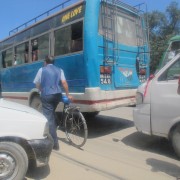
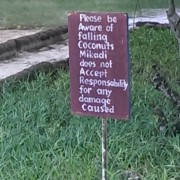
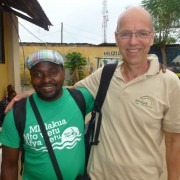
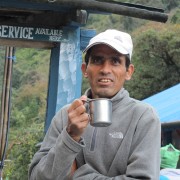
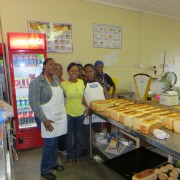
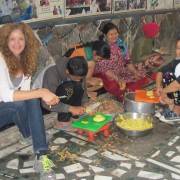


Hinterlasse einen Kommentar
An der Diskussion beteiligen?Hinterlasse uns deinen Kommentar!